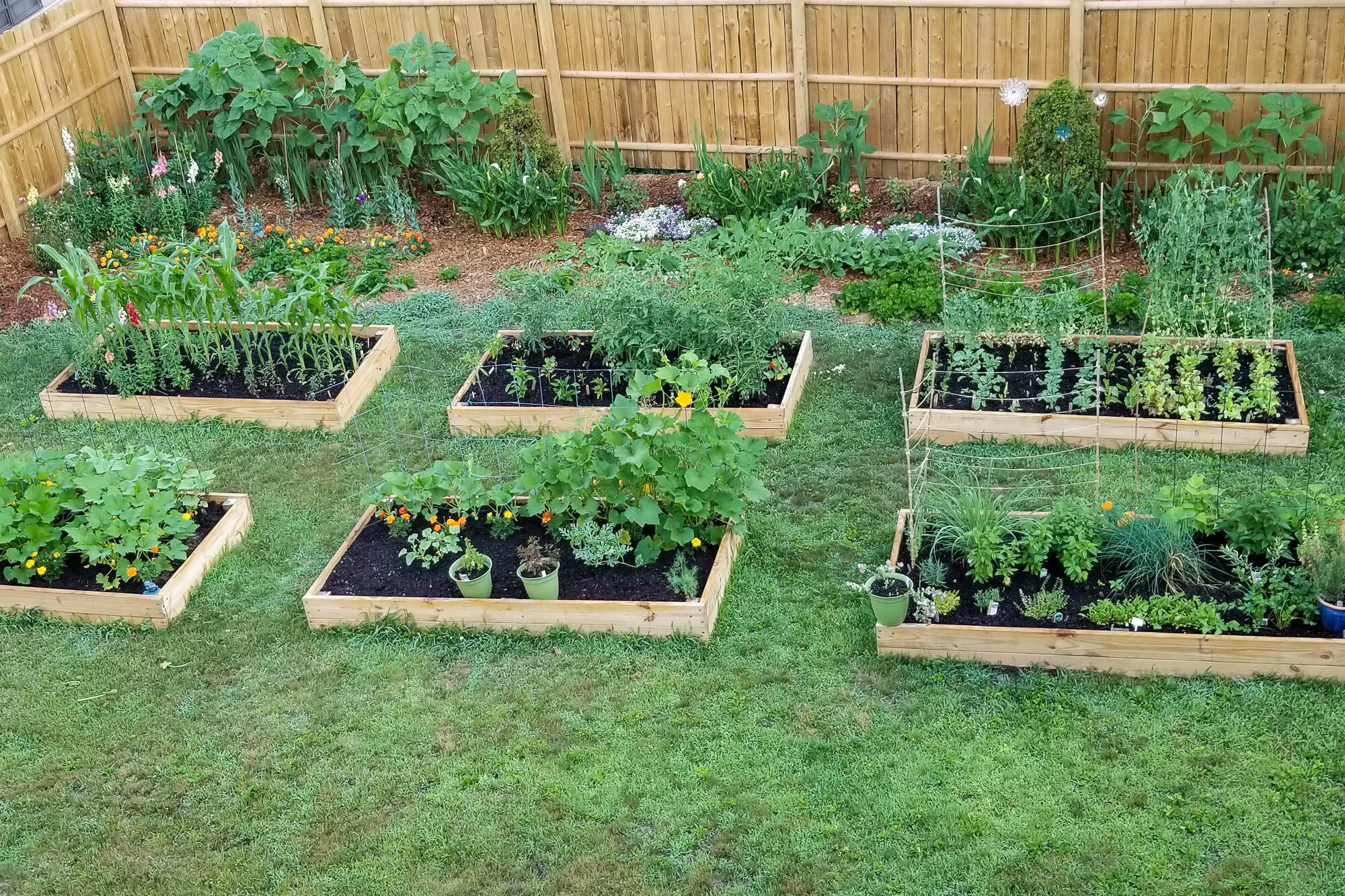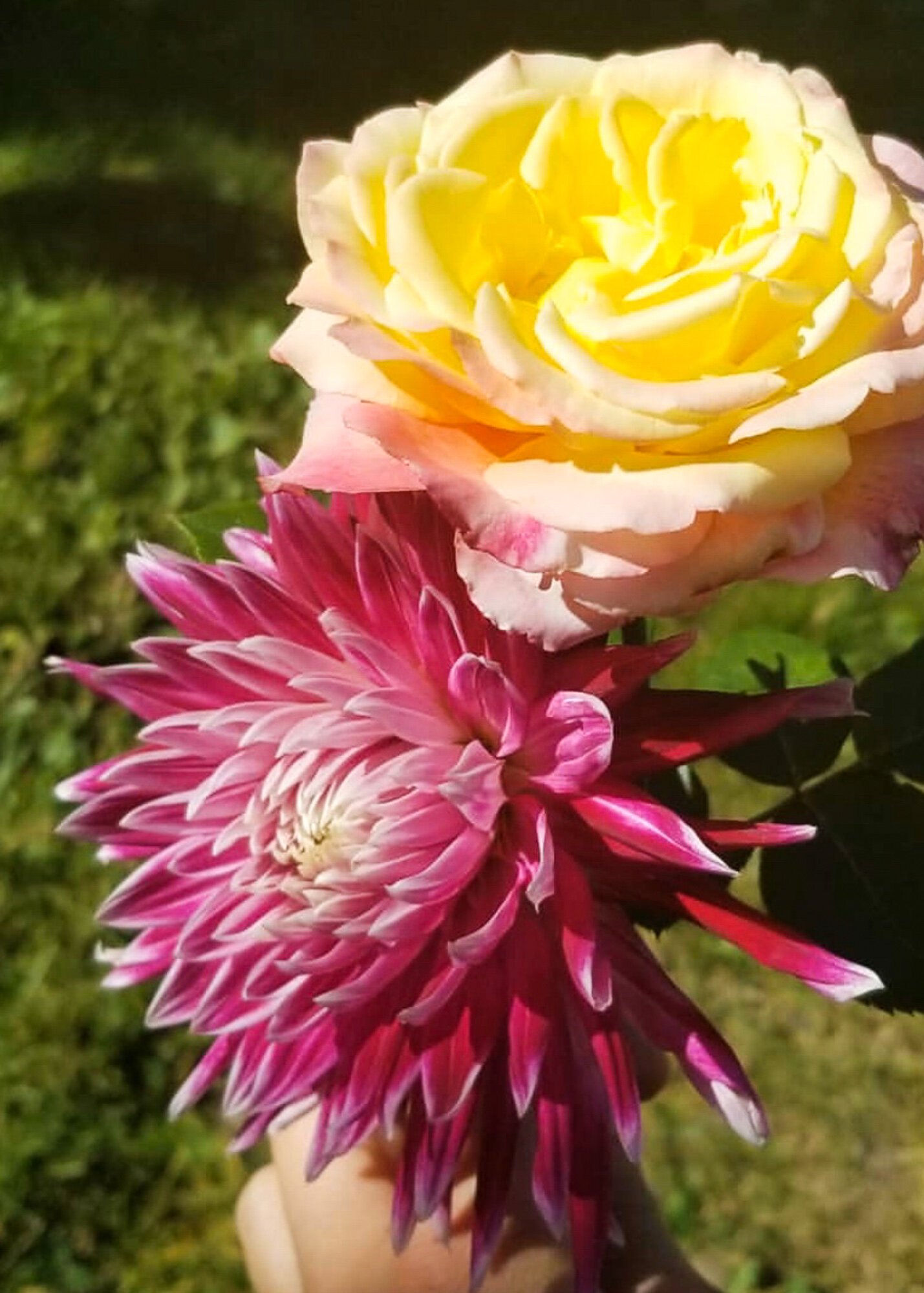While we’ve dabbled with growing a few vegetables in the past, we’re really hopeful to have a thriving backyard garden this spring and summer with even more vegetables and Bri’s dream - a cut flower garden. Since we have absolutely no experience whatsoever, we were so excited to discover Emily Gardner’s Instagram account last year. She just so happens to be a landscape designer, AND she also just so happens to have a dreamy backyard garden right here in the city. Read on for her tips on getting started - because the best gardens are planned in the winter!
Tell us a bit about yourself!
Hi! My name is Emily Gardner, and my name fits - I love to garden!
I grew up along the Hudson River in Malden, a small hamlet of Saugerties in Ulster County. I seem to have slowly migrated northward, moving from Albany to Saratoga Springs before ultimately buying my first home in Glens Falls in February of 2019. I was extremely lucky to find a home with a sunny yard, a large porch (which my cat loves), and a two-car garage (one side of which functions as my garden shed for the summer).
When I’m not working or gardening, you might find me in the kitchen, out at yard sales or flea markets, or adding things to an Etsy shop I share with my mom (Malden Mercantile).
Photo courtesy of Emily Gardner
We’d love to hear a bit more about your career in landscape design and what motivated you to get into it.
I received my Bachelor’s in Landscape Architecture from Cornell University and my Masters in Urban and Regional Planning from UAlbany. I actually started college in Boston with an interest in neuroscience and psychology, but my interest in the outdoors ultimately won out!
Growing up in a small town, I spent lots of time outside– playing along the river, building forts in the woods, and gardening alongside my mom. When I realized that science might not be my ultimate career path, I looked into schools with interior design programs. I actually discovered landscape architecture by accident, when a transfer advisor asked me about my hobbies and, thankfully, suggested a major that combined science and plants with design.
Now I work as a landscape designer and community planner at Saratoga Associates in Saratoga Springs. I’ve been able to work on dozens of projects, ranging from state parks to community waterfronts and downtown streetscapes. One of my favorite parts of a project is choosing the plants for each site. As my friends begin to buy homes, some have asked for ideas for their yards, which is a lot of fun for me.
Photo courtesy of Emily Gardner
What inspired you to plant your backyard garden?
I’ve been in the garden for as long as I can remember – so over 30 years! When I was little, my mom would give me a small patch where I could grow whatever I wanted (which was usually a mix of wildflowers). Last year was the first time I truly had space that was all mine, and I was so excited to start digging!
While renting in Saratoga, I had a community garden plot – but everything had to be pulled out at the end of the season, so I grew mostly veggies and some annual flowers. As soon as I’d purchased the house, I was drawing plans for what the yard might become, including trees and perennials. I was lucky that the house itself had been fully renovated, so I was able to head straight to the garden.
It started out as just lawn, with a rusted wire fence hidden behind an overgrown hedge. As soon as the snow melted, my dad helped me remove all of the hedges (thanks to the DPW for picking all of that up!) and replace the fence with a wooden one. Then we built six raised beds and left a deep border along the fence for flowers. I was lucky enough to get quite a few perennials from family members who were eager to share. I filled the raised beds with veggies and herbs, which meant I had a mini farmers’ market right in my backyard.
Photo courtesy of Emily Gardner
You mentioned in a previous chat that the best gardens are planned in the winter. Tell us a bit more about your winter planning process!
Cold winter days are the perfect time to start daydreaming. When everything is covered in white, it’s like a blank canvas to imagine what could be when the color returns in spring. I start out with a list of all of the things I might want to plant, and decide which things I want to start as seeds and which I want to buy as plants. I definitely buy my tomatoes as plants – I don’t need an entire packet of seeds which I just want a few plants!
If you want to start things from seed, definitely plan early, and check the guidelines on the packet. Some plants (perennial flowers in particular) should be started up to 12 weeks before the last frost. Using mid- to late-May as a guide, that means starting seeds in late February or early March!
What are some things to keep in mind when planning a garden in a smaller footprint (like a Glens Falls backyard)?
When it comes to vegetables, think about alternating what you grow. Space for early crops – like lettuce, peas, radishes – can then be used for late-season items like beans and squash. Also look for “bush” varieties – veggies like pumpkins, summer squash, and tomatoes can all be found in varieties where the plants stay compact, making them better suited to small spaces. Peas and pole beans, which grow on vines, can be trained to grow up a trellis or post and will save space on the ground. Also, take advantage of containers! Pots allow you to move things to where the sun is, if needed, and are a great option for renters.
Look for inspiration around town - your neighbors might have similar growing conditions and challenges. Don’t be afraid to try something new – if it doesn’t work out, there’s always next season!
Photo courtesy of Emily Gardner
There are so many options - how do you decide what to plant?
At the end of the season, I make a note of what did well, and what didn’t do so great - what got hit by disease or pests? and what seemed resistant? I replant the top performers, tweaking my choices based on what I might want more or less of – I ended up supplying my office with fresh mixed greens well into October last year! I always leave space for “experiments” – a few new things I want to try. This year I'm planning to add strawberries and sweet corn, along with a few ornamental grasses and red-twig dogwood shrubs for future winter interest.
What flowers or vegetables would you recommend for beginners? What has worked well for you (or not so well)?
Flowers like zinnias and cosmos are really reliable from seed, attract pollinators, and are great for cut arrangements. I always add in some snapdragons too, but find them easier to buy as plants. Lettuce, peas, carrots, radishes, and green beans are must-haves for me in my veggie garden and have always done well. I always plant cucumbers, too, but they can come out a little strange if watering isn’t consistent (think baseball-bat shapes)! Don't be afraid to add some perennials: Hosta, astilbe, and coral bells for shady spots; echinacea, coreopsis, sedum, salvia, irises, and ornamental grasses if you've got sun. Butterfly bushes are great if you've got a sunny spot for a shrub - they're very tolerant, fast-growing, fragrant, and butterflies really do love them.
Photo courtesy of Emily Gardner
Do you have a favorite place to shop for seeds?
Browsing through seed catalogs is a lot of fun, but I also pick some up at Dollar Tree! They have a lot of the standby plants (sunflowers, green beans, zinnias, marigolds, radishes) for $0.25 per packet! When I’m looking for something new, I check out the local garden centers. They’re more likely than the big-box stores to have an unusual or heirloom variety of something and it’s great to support a local business at the same time. I'm looking forward to exploring the local nurseries this year.
Photos courtesy of Emily Gardner
Any must-have supplies to prepare for starting seeds?
I began with seed starting kits (a plastic tray with a cover and Jiffy soil pellets), and I still use them. Now I have a small indoor greenhouse – wire shelves with a plastic cover – which gives me the space I need when it’s time to start the seeds, but is small enough to pack away for the rest of the year.
I’ve started adding to my supplies: Last year I bought a heating mat, which really helps with germination by keeping the soil at a steady, gently warm temperature. I also ordered some grow lights online and really noticed the difference they make. Without them, the little seedlings reach toward the sunlight coming in through the window, and the grow lights allow you to make sure they get light every day, while also encouraging them to grow straighter, a win-win!
Emily Gardner
The At Home series is made possible by The Julie Snyder Team - Howard Hanna Real Estate Services.
For 15 years Julie Snyder has been an experienced top producing Realtor serving buyers and sellers in and around the Glens Falls and greater Adirondack Region. She is recognized as being in the Top 5% of Realtors in the Nation.
Whether clients are selling their home, looking for a home for the very first time or they're seasoned investors, her team works tirelessly to accommodate their needs and exceed their expectations. The Team is incredibly well-versed in the area's housing market and always manages to find their clients those hidden gems.
Speaking of gems, check out this sweet home for sale at 10 Caroline Street in Queensbury. Get the details here!
Thank you for supporting the businesses that support Glens Falls Living!












